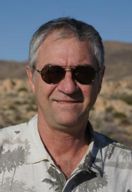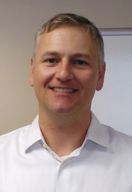Meeting Information
|
"Application of NMR for Evaluation of Tight Oil
Reservoirs"
Richard E. Lewis
Petrophysics Technical Manager, Unconventional Resources
Schlumberger
The reservoir quality (RQ) of gas shale reservoirs
can be equated to the amount of kerogen or Total Organic
Carbon (TOC) because the majority of the producible pore
volume is hosted in the organic matter (OM pores).
Determining the RQ for a tight oil is more difficult due
to 1) the presence of two hydrocarbon types at reservoir
conditions--high-viscosity, low-maturity bitumen and
light oil; plus 2) the presence of pore systems hosted
within the inorganic matrix (IP pores).
Comparison of paired core and log NMR measurements
from the Eagle Ford and other shales indicates that a
portion of the pore fluids that are measured with the
log are not present in the core sample. This pore volume
has been expelled during core extraction and storage.
The remaining pore volume is generally not producible,
and this hydrocarbon fraction represents either bitumen
or oil sorbed to the OM pore walls. The difference
between the two pore volumes has proven to be an
acceptable proxy for the determination of producible
pore volume, and a primary challenge is to differentiate
between the water and hydrocarbon fractions. This is
currently performed through core NMR using fluid
reinjection.
Jarvie (2012) introduced an index (Oil Saturation
Index) to highlight producible zones within a tight oil
reservoir. It is based on RockEval analysis, and it is
the ratio of producible oil (S1) divided by all
hydrocarbons as measured by this technique (S1, S2, and
S4). This total includes the carbon in light oil,
bitumen, and kerogen. The higher the ratio the higher
the RQ. Higher RQ can be caused by 1) conversion of
bitumen to light oil, or 2) migration of light oil from
OM to IP pores—a hybrid reservoir. We have adapted this
index for in-situ log measurements and have adjusted it
to award intervals with higher weight % light oil. In
contrast to a gas shale, the intervals with a lower
kerogen content are generally more prospective. Examples
from the Bakken, Eagle Ford, Woodford and several
international shales will be presented.
The exclusive use of a T2 distribution limits ones
ability to differentiate between pore hydrocarbon
phases, pore type (OM vs. IP), and pore fluid (water vs.
oil). The addition of T1 distribution permits one to
quantify bitumen (above a lower T1/T2 bound) and
differentiate between OM and IP pores up to intermediate
T2 relaxations. An enhanced logging service that
measures both T1 and T2, and which is also optimized to
provided better accuracy at lower T2 relaxations, is
currently undergoing field tests.
|
About the Speaker
Richard (Rick) Lewis is the developer of the gas
shale evaluation workflow that was initially fielded
thirteen years ago and has been applied to more than
4000 wells in North America and abroad. In his current
position, located in Denver, Rick manages a small group
responsible for the continual improvement for this
workflow, for its introduction and application to the
international market, and for the development of
workflows for the evaluation of liquids-producing
shales.
Rick is also the interface to the Schlumberger
research and engineering groups for the development of
evaluation technologies for unconventional reservoirs.
Prior to this assignment, he was responsible for
wireline interpretation development for the central and
eastern United States. Rick has also worked for Shell
Oil and the U.S. Geological Survey.
Rick received a BS degree from UCLA and MS and PhD
degrees from Cal Tech, all in geology.
|
From the President
|

|
Suzanne Heskin
I hope you all had a fantastic summer filled with
hiking, biking, camping, or your favorite Colorado
activity! It went quickly for me, and my daughter is
already an old pro at being in the first grade! DWLS
Season is upon us, time to focus on sharing knowledge
and improving ourselves professionally again. Hopefully
some or many of you were able to attend the SPWLA
symposium in CA, or URTeC in TX. These conferences
continue to be vital to the health of the industry,
especially in downturns such as this. I invite any of
you who attended to share with those who didn't. Share
ideas, thoughts, papers, CDs, suggestions for speakers
as well.
Bob Cluff worked over the summer to line up some high
quality speakers for the fall, and I hope attendance
remains as high as it was last year, if not higher.
Bring coworkers or friends to our meetings who haven't
attended before and perhaps our membership can grow a
bit this year.
Moving forward into the 2015-2016 year, please feel
free to approach any board member if you have concerns,
suggestions, or compliments!
Thanks, welcome back, and I look forward to seeing
everyone soon!
|
| |
From the Vice President - Technology
|

|
Bob Cluff (The Discovery Group)
We're off to another exciting year for DWLS.
My plan for 2015/16 will be to combine selected
technology/tool talks from the major service providers
with interpretation and case history talks on the 5 or 6
major tight reservoir plays. In these economically
challenging times most operators are focused on just a
small number of key play opportunities with the best
economics, and I'll follow the crowd and try to focus
our attention on those key plays. Nonetheless, new
technology is our lifeblood and it's important we stay
on top of new developments as they occur.
I have lined up for us two talks this Fall from the
2015 SPWLA conference in Long Beach on NMR applications
to tight reservoirs (Rick Lewis in September, and
Margaret Lessenger in November), and a third on advanced
logging measurements and core data from the Bakken play
(Gary Simpson in October). I'll also be
drawing from recent papers presented at URTeC and AAPG
to fill out the Spring 2016 program. If you
attended any of these summer conferences and saw
something you think is particularly appropriate for the
chapter, please contact me right away and let me know –
I can't see every paper!
Plans for the DWLS Fall and Spring workshops will be
forthcoming shortly. There might be some
changes in the planning.
|
| |
From a Vice President - Membership
|

|
Aaron Fisher (Tracker Resources)
Hello everyone!
Fall is shortly around the corner which means that
the yearly renewal process is upon us. Those of
you who have not renewed your yearly dues will be
receiving a friendly reminder from me with renewal
instructions soon. If you would like to be
proactive, please follow the link: (http://dwls.spwla.org/Membership_Form.php.)
All active members are given a three month grace period
to renew their membership. November marks the end
of the grace period. On a positive note, the low
commodity prices have not hampered membership as we are
up to 370 active members, of which 307 are lifetime
members.
There has been a lot of turnover in the industry in
the past six months. Please be sure to send you
updated contact information (VP_Membership@dwls.spwla.org)
so we can keep everyone current. Don't miss out on
hearing about the holiday party, spring workshop, and
all the monthly talks.
|
| |
From a Director (Monthly Beverage Sponsorship,
and Social Events)
|

|
Bryan Page (Weatherford)
The drinks during our monthly lunch meeting are
traditionally sponsored by a company or organization.
This practice serves several worthy objectives. First,
it encourages people to arrive on time, because after
11:30 no free drink coupons are issued, second it
creates a good social atmosphere prior to the talk, and
third it gives the sponsor the opportunity to promote
their organization in the DWLS monthly newsletter and at
the monthly meeting. Therefore we encourage our members
to sponsor these drinks or contact their marketing
department to do the same.
For more information or to save your spot, please
contact Bryan Page
Bryan.page@weatherford.com
|
| |
|
Meeting Details
|
Please thank
Schlumberger
for sponsoring the free beverage tickets this month
(beer, wine or soda)!
|
11:20 am - 1:30 pm
|
Wynkoop Brewing Company
(tell
me how to get there)
|
$20 per person
$25 at the door
(space permitting)
|
| Must be made on-line at
http://dwls.spwla.org
before 5 PM on Thursday,
. Or click below to go directly to PayPal. |

|
Please note that the room has a maximum capacity
of about 100 people. We have generally allowed walk-ins
in the past. However, if we approach this limit
with paid reservations, walk-ins will be turned
away!
|
Cancellations must be made no later than 5 PM
the Friday prior to the talk, or you will be responsible
for the full cost of the luncheon!
or contact Kim Mosberger at 303-770-4235.
Our full cancellation/wait list policy is available on the
website.
|
"Using advanced
logging measurements to develop a robust
petrophysical model for the Bakken "
Gary Simpson
Hess
|
|
Calendar of Events
|
Click to view the calendar on the web.
|
Chapter Statistics
|
Statistic
|
This Year
|
3-Year
Ave.
|
# of Active
members |
370 |
345 |
# that are
New members |
3 |
27 |
# that are
Students |
11 |
9 |
# that are
Lifetime Members |
307 |
275 |
September luncheon
meeting attendance |
|
81 |
October luncheon
meeting attendance |
|
63 |
November luncheon
meeting attendance |
|
75 |
| December holiday party attendance |
|
59 |
January luncheon
meeting attendance |
|
97 |
February luncheon
meeting attendance |
|
88 |
March luncheon
meeting attendance |
|
87 |
April luncheon
meeting attendance |
|
71 |
May luncheon
meeting attendance |
|
74 |
| June
summer social attendance |
|
31 |
|
|






